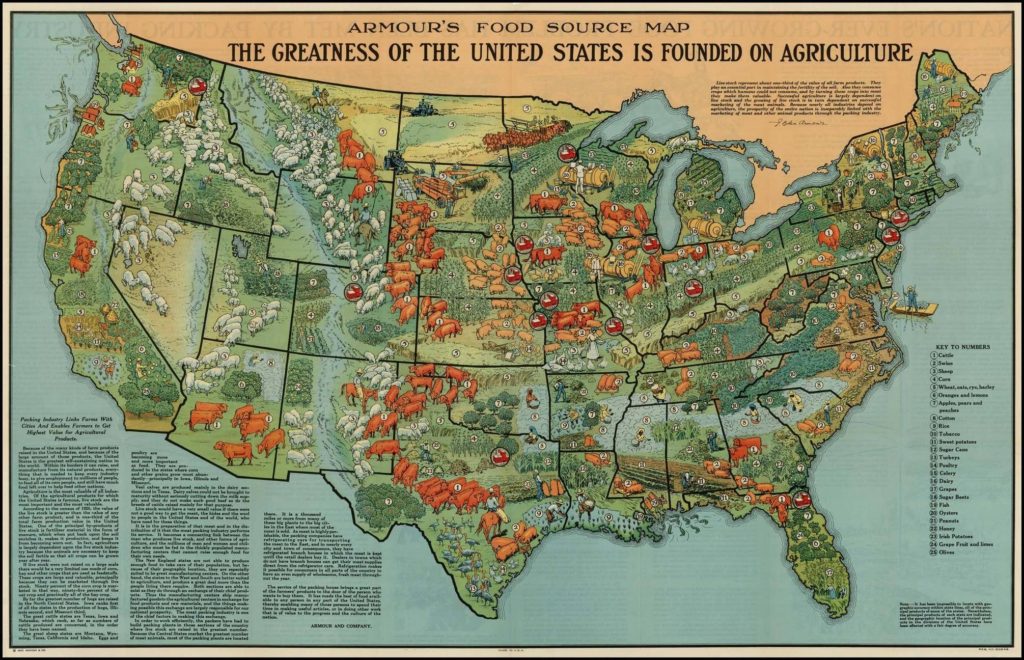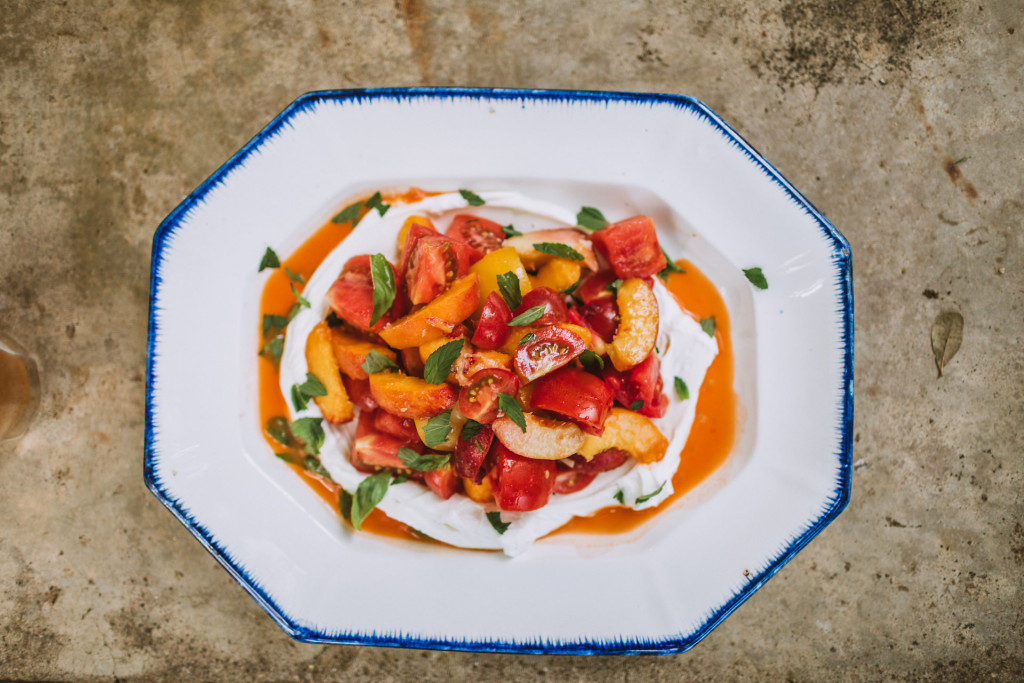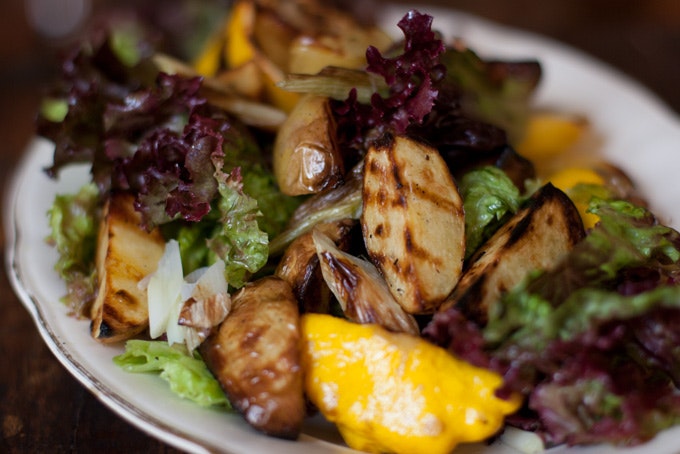
WHAT TO COOK THIS FOURTH OF JULY
06/28/19 — Farm
By: Ada Broussard
Before we jump into our main post this week, we’ve got a quick PSA: We’re in dire need of a couple new harvest vehicles on the farm. Do you have an old van or truck that’s collecting pollen in your yard? Or maybe you know someone who does? This vehicle will live (and die) on our farm, and help us transport the harvest from the fields to our cooler. Our standards are pretty..low. No plates? No windows? Missing a door? Doesn’t drive in reverse? No problem. The main criteria is that it needs to be affordable for our farm budget. Vegetables are our preferred currency :). Please give Brenton a call if you think you may own the next addition to JBG’s impressive fleet of of harvest trucks!
Now onto the main course: Fourth of July.
Americana and farming go hand in hand. The history of agriculture in America and the history of America itself are synonymous. The two have grown, morphed, bled, and changed as the years since the signing of the declaration of independence have ticked by. Today, the state of our country’s food system is… complicated, to say the least. (Checkout these series of maps that explain food in America.) While industrial agriculture operations are producing the majority of our country’s food, we think America’s birthday is a wonderful occasion to celebrate today’s small, diversified family farms that undoubtedly were the cornerstone of American agricultural history for many, many years.
![]() JBG farm friend Velta (left) with Willie and Allegani Jani (right) at the 1995 Fourth of July Picnic.
JBG farm friend Velta (left) with Willie and Allegani Jani (right) at the 1995 Fourth of July Picnic.
Why all the barbecue on Fourth of July? America is turning 243 years old this year, but how old is the tradition of an all-day cookout over coals? A bit of investigation into this topic and we learned a few interesting things. Most importantly: on the inaugural celebration of America’s Independence, John Adams (plus a few thousand of his friends) ate… turtle soup. Yep - a soup featuring the the slow, shelled reptile was a popular dish of the day, and one that apparently screamed celebration. This soup stayed in vogue for a while, but the turtle meat was eventually replaced with veal as early Americans became concerned with turtle conservation. (Ironically, up until a few years ago Texas used to be one of the largest global exporters of turtle meat to Asian markets. We’re happy to say that the Texas turtle shuffle has pretty much come to an end and our turtles can now rest easy.)
![]() https://www.reddit.com/r/MapPorn/comments/1bzeqm/american_agriculture_and_coastal_fisheries_1922/
https://www.reddit.com/r/MapPorn/comments/1bzeqm/american_agriculture_and_coastal_fisheries_1922/
Barbecue eventually became the main attraction on the Fourth of July picnic table. This past time that we Texans know so intimately was likely influenced by the Caribbean technique of cooking meat over wood --“barbacoa”. Barbecue found a home in the south, and the proliferation of hog farmers meant pork because the star protein. (Though if you’re reading this and are from Texas, we know beef is king in Texas barbecue. We proudly stand alone on this one.) Cooking and utilizing a whole pig was the cheapest way to feed a celebratory crowd, and barbecue became an important food for impoverished southern blacks, making it a pillar of both historical and contemporary soul food cuisine. As African Americans moved out of the south, so too did barbecue traditions, and regional specialties were born. On this Fourth of July, you can bet lots of folks in Texas will be smoking a beef brisket and those in Tennessee will be cooking a pork shoulder.
And now that you know a bit more about the celebrated past time of cooking meat for Fourth of July, we’re here to try and convince you to cook more… vegetables. Below are some of our favorite seasonal recipes that we think are perfect for a Fourth (or fifth, or sixth) of July hang. These recipes pair well with barbecue, travel well, and are easily shareable. And to be clear, this isn’t a hot-dog smear campaign. We do love a good dog (Salt and Time sells delicious all beef hot dogs featuring Angus beef from sustainable Texas ranches. Just saying.) We simply think your Fourth of July spread should include some standout veggie dishes, as well. Who says culinary traditions can’t change? After all, we started this party eating turtle soup. No matter what vegetable shows up in your CSA box or what catches your eye at market, here are some recipes worth making. Without further adieu, Fourth of July Food:
![]() Photo by Rick Cortez
Photo by Rick Cortez
![]() Photo by Heidi Swanson courtesy of 101 Cookbooks.
Photo by Heidi Swanson courtesy of 101 Cookbooks.
Happy Fourth of July, ya’ll. See you at market!
Before we jump into our main post this week, we’ve got a quick PSA: We’re in dire need of a couple new harvest vehicles on the farm. Do you have an old van or truck that’s collecting pollen in your yard? Or maybe you know someone who does? This vehicle will live (and die) on our farm, and help us transport the harvest from the fields to our cooler. Our standards are pretty..low. No plates? No windows? Missing a door? Doesn’t drive in reverse? No problem. The main criteria is that it needs to be affordable for our farm budget. Vegetables are our preferred currency :). Please give Brenton a call if you think you may own the next addition to JBG’s impressive fleet of of harvest trucks!
Now onto the main course: Fourth of July.
Americana and farming go hand in hand. The history of agriculture in America and the history of America itself are synonymous. The two have grown, morphed, bled, and changed as the years since the signing of the declaration of independence have ticked by. Today, the state of our country’s food system is… complicated, to say the least. (Checkout these series of maps that explain food in America.) While industrial agriculture operations are producing the majority of our country’s food, we think America’s birthday is a wonderful occasion to celebrate today’s small, diversified family farms that undoubtedly were the cornerstone of American agricultural history for many, many years.
 JBG farm friend Velta (left) with Willie and Allegani Jani (right) at the 1995 Fourth of July Picnic.
JBG farm friend Velta (left) with Willie and Allegani Jani (right) at the 1995 Fourth of July Picnic.
Why all the barbecue on Fourth of July? America is turning 243 years old this year, but how old is the tradition of an all-day cookout over coals? A bit of investigation into this topic and we learned a few interesting things. Most importantly: on the inaugural celebration of America’s Independence, John Adams (plus a few thousand of his friends) ate… turtle soup. Yep - a soup featuring the the slow, shelled reptile was a popular dish of the day, and one that apparently screamed celebration. This soup stayed in vogue for a while, but the turtle meat was eventually replaced with veal as early Americans became concerned with turtle conservation. (Ironically, up until a few years ago Texas used to be one of the largest global exporters of turtle meat to Asian markets. We’re happy to say that the Texas turtle shuffle has pretty much come to an end and our turtles can now rest easy.)
 https://www.reddit.com/r/MapPorn/comments/1bzeqm/american_agriculture_and_coastal_fisheries_1922/
https://www.reddit.com/r/MapPorn/comments/1bzeqm/american_agriculture_and_coastal_fisheries_1922/
Barbecue eventually became the main attraction on the Fourth of July picnic table. This past time that we Texans know so intimately was likely influenced by the Caribbean technique of cooking meat over wood --“barbacoa”. Barbecue found a home in the south, and the proliferation of hog farmers meant pork because the star protein. (Though if you’re reading this and are from Texas, we know beef is king in Texas barbecue. We proudly stand alone on this one.) Cooking and utilizing a whole pig was the cheapest way to feed a celebratory crowd, and barbecue became an important food for impoverished southern blacks, making it a pillar of both historical and contemporary soul food cuisine. As African Americans moved out of the south, so too did barbecue traditions, and regional specialties were born. On this Fourth of July, you can bet lots of folks in Texas will be smoking a beef brisket and those in Tennessee will be cooking a pork shoulder.
And now that you know a bit more about the celebrated past time of cooking meat for Fourth of July, we’re here to try and convince you to cook more… vegetables. Below are some of our favorite seasonal recipes that we think are perfect for a Fourth (or fifth, or sixth) of July hang. These recipes pair well with barbecue, travel well, and are easily shareable. And to be clear, this isn’t a hot-dog smear campaign. We do love a good dog (Salt and Time sells delicious all beef hot dogs featuring Angus beef from sustainable Texas ranches. Just saying.) We simply think your Fourth of July spread should include some standout veggie dishes, as well. Who says culinary traditions can’t change? After all, we started this party eating turtle soup. No matter what vegetable shows up in your CSA box or what catches your eye at market, here are some recipes worth making. Without further adieu, Fourth of July Food:
Tomatoes:
Believe it or not, the JBG tomato season is nearing its end. Celebrate this summer fruit before it’s gone and make this simple tomato salad whilst sipping this green tomato gimlet. Photo by Rick Cortez
Photo by Rick Cortez
Grilled Potato and Patty Pan Squash Potato Salad:
Heidi Swanson may as well be a JBG CSA member for her ability to combine both patty pan squash and potatoes, often included together in our CSA boxes. We think this simple and seasonal potato salad is a welcome riff on an Independence Day classic. Photo by Heidi Swanson courtesy of 101 Cookbooks.
Photo by Heidi Swanson courtesy of 101 Cookbooks.
In a pickle? Quick pickle.
Slice up some of your onions, cucumbers, or even yellow squash (trust us) and make some quick pickles. These acidic and crunchy snacks will be a welcome addition to a rich Fourth of July spread. Farmer Brenton got us all hooked on bread and butter pickled yellow squash.The Popper
Last but not least, head to the market and load up on some jalapenos to make the ever-popular, popper. We love both a bacon-forward and vegan version. Go a little crazy, and consider making some milder, kid-friendly versions with our banana peppers.Happy Fourth of July, ya’ll. See you at market!






 0 ITEMS IN CART
0 ITEMS IN CART 

